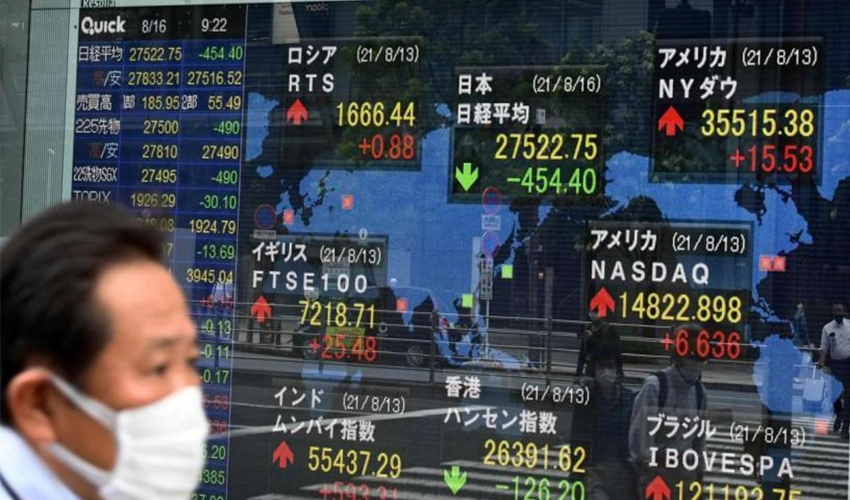Asian stock markets displayed stability on Tuesday, with developments from the central banks of China and Japan momentarily interrupting the dollar's recent ascent.
These events provided traders with a brief respite before the release of US inflation data, which could have significant implications for the Federal Reserve's future rate decisions.
The yen experienced its strongest performance against the dollar in two months following remarks by Bank of Japan Governor Kazuo Ueda, who suggested that policymakers might have enough economic data by year-end to conclude that short-term interest rates should rise.
Meanwhile, the yuan saw its best day in six months as Chinese authorities pledged to address one-way currency movements and as Reuters reported increased scrutiny by the central bank on dollar purchases. However, both currencies remain near their weakest levels of the year, with the yuan at 7.3016 per dollar in offshore trade and the yen trading at 146.68 per dollar.
Japanese govt bonds
Japanese government bonds continued to face pressure, with 10-year JGB yields reaching a fresh high of 0.71%.
Analysts caution that while this move may benefit yen enthusiasts in the medium term, the full impact won't be felt until the spring wage negotiations in April 2024.
Relief in China over property developer
In China, investors found some relief as the country's largest private property developer, Country Garden, secured creditor approval to extend repayments on six onshore bonds by three years. This development helped Hong Kong's Hang Seng Mainland Properties Index rebound by as much as 1.5%, reversing an earlier drop of over 2%.
MSCI's broadest index of Asia-Pacific shares outside Japan inched up by 0.12%, while Japan's Nikkei rose by 0.61%. Market participants are closely eyeing upcoming US inflation data and this week's European Central Bank meeting to gauge interest rate expectations and market sentiment.
US inflation figures awaited
US inflation figures, due on Wednesday, are anticipated to show annualized core inflation declining to 4.3% in August, although the headline number is expected to increase to 3.6%. Analysts suggest that the outcome could impact the US dollar's trajectory, with implications for market expectations of further rate hikes.
Investors are currently pricing in about a 45% chance of another US rate hike by year-end. This, along with the US inflation data, will be a critical factor influencing market sentiment in the coming days.
Additionally, this week, risk appetite will be tested as British chip designer Arm Holdings aims to raise nearly $5 billion through listing in New York.
In overnight trading, a weaker dollar and an upgrade of Tesla by Morgan Stanley analysts contributed to gains in US stock markets, with Tesla's shares surging by 10%, and the S&P 500 rising by 0.7%.
As the trading day began in Asia, US futures slipped by 0.11%, reflecting cautious sentiment ahead of key data releases and events.
Currency market movements
In currency markets, the Australian dollar was weighed down by a further drop in consumer sentiment, maintaining a streak below the neutral 100 mark since March 2022.
The Aussie, which had seen gains on Monday alongside the yuan, traded slightly higher at $0.6433. Meanwhile, the New Zealand dollar dipped 0.3% to $0.5918.
The euro reached a one-week high against the dollar, but market movements were subdued as investors adopted a cautious stance ahead of Thursday's European Central Bank meeting. The pricing suggests a 56% chance that policymakers will leave rates unchanged.
Benchmark 10-year Treasury yields held steady at 4.2940%. In commodity markets, Brent crude futures remained stable at $90.96 a barrel.
Gold maintained its position at $1,922 an ounce, while bitcoin faced headwinds, dropping below $25,000 for the first time in three months on Monday.


























